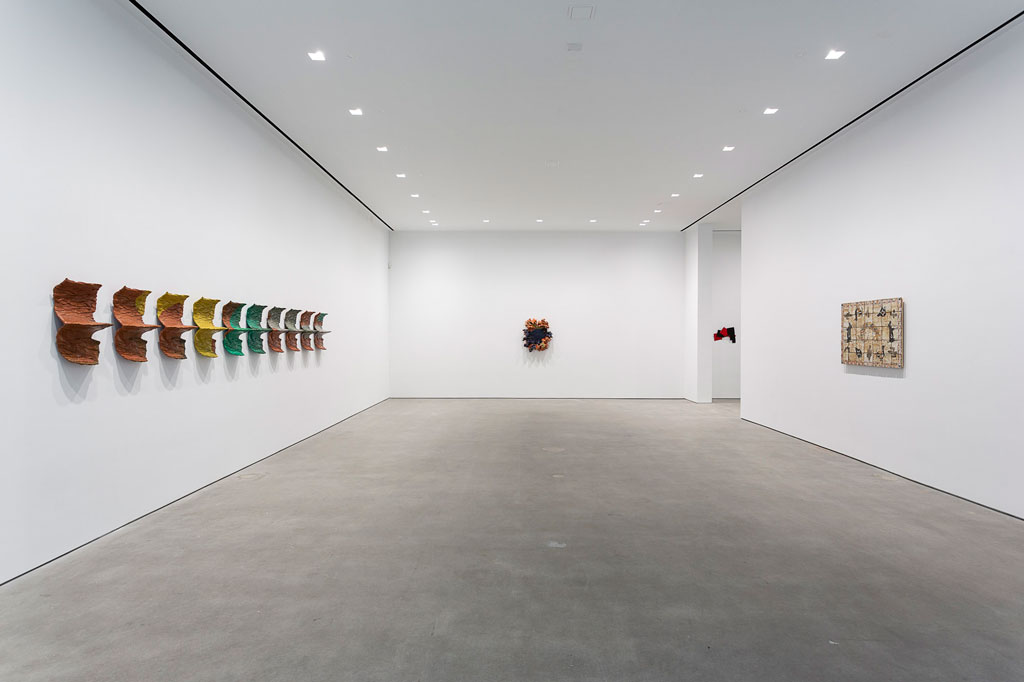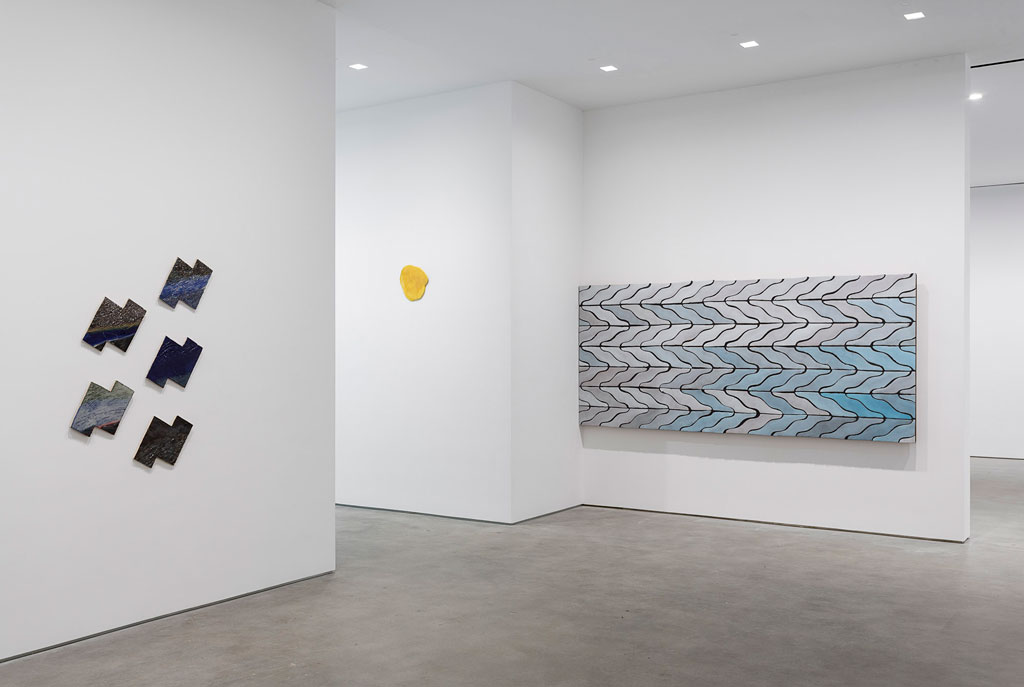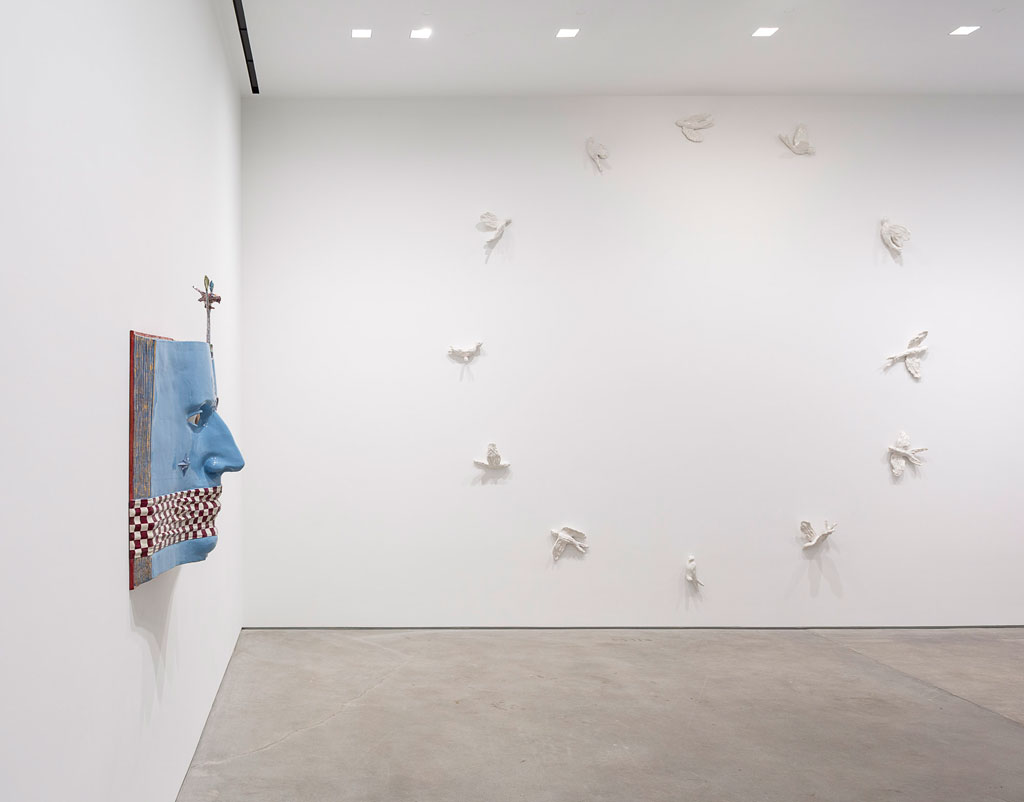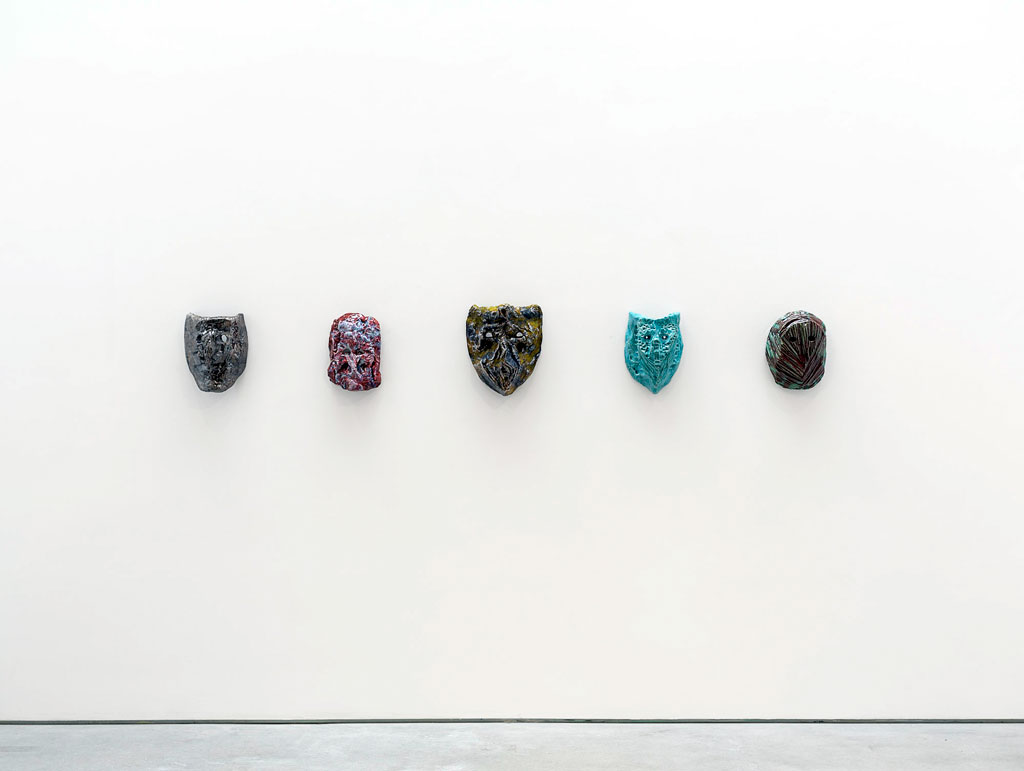ART CITIES:N.York: Abstract, Representational, And So Forth
 The exhibition “Abstract, Representational, and so forth” highlights a selection of contemporary artists who work with ceramics. Focusing on examples that are hung on the wall, the ceramics in this exhibition portray how this particularly malleable medium is able to transform in various modes and interact with architectural space as both a support and a means to elaborate different forms.
The exhibition “Abstract, Representational, and so forth” highlights a selection of contemporary artists who work with ceramics. Focusing on examples that are hung on the wall, the ceramics in this exhibition portray how this particularly malleable medium is able to transform in various modes and interact with architectural space as both a support and a means to elaborate different forms.
By Efi Michalarou
Photo: Gladstone Gallery Archive
Taking up various traditions, such as the relief, the mosaic, or the bust, the artworks in “Abstract, Representational, and so forth” expand the relationship between the practice of ceramics and the structure of the white cube. These works move from the abstract to the figurative and query the objecthood of sculptures: some present glazed surfaces akin to paintings, while others further this questioning in hand-built objects that extend in three dimensions. Abstract, Representational, and so forth brings together a range of artists whose ceramics often fit within a multi-disciplinary practice that includes painting, sculpture, photography, and installation, but focuses on the technical, formal, and conceptual elements of their ceramic works. Sarah Crowner’s diverse practice ranges from paintings and ceramics to sculpture and theatre curtains. Her bold and colourful paintings and tile works incorporate forms found in architecture, nature, and in the history of twentieth-century art and design. In her choice of motifs, the Venezuelan-born artist, Magdalena Suarez Frimkess, seems entirely unbound by convention. She’s just as likely to decorate one of her pieces with scenarios from Greco-Roman pottery as she is to feature Mickey and Minnie Mouse dancing the jitterbug. Though she often returns to the same imagery in her work, she never plans her subjects beforehand. Alteronce Gumby’s work focus on representation of the self and subvert the traditional understanding of light and color through nuanced application of tonal changes directly with the artist’s fingers and hands. Influenced by 1960s counterculture, the free speech movement, and the surf ethos of her native California, Mary Heilmann ranks amongst the most influential abstract painters of her generation. Considered one of the preeminent contemporary Abstract painters, Heilmann’s practice overlays the analytical geometries of Minimalism with the spontaneous ethos of the Beat Generation, and are always distinguishable by their often unorthodox – always joyful – approach to color and form. Lena Henke has developed a diverse body of sculptural works, often arranged in comprehensive spatial installations. Henke’s work references urban planning, Land Art, human relationships, sexuality and fetishism, consistently infiltrating the patriarchal structure of art history with a very smart and humorous tone. Her formal language and use of materials often alludes to Minimal Art combined vividly with Surrealist imagery to examine the structures of street life and the ideas of city planners and urban theorists. Cameron Jamie’s work created over the past 20 years, ranges through a wide range of media: performance, video, sculpture, installation, photography and drawing, including examples of investigation around the notion of portraiture, self-representation, and collective identity. The artist is considered a precise chronicler of American and thus European tradition and lifestyle. Liz Larner experiments with abstract sculptural forms in a dizzying array of materials, including polychromatic ceramics that evoke the tectonic geologic shifts of the western landscape. An inventor of new forms, Larner’s sculptures are not easy to categorize. They defy easy description by design, such as the geometric sculpture of a cube turning into a sphere that is both yet neither, or a complex chain of linked metal rings that never tangles and can also be worn as jewelry. Andrew Lord began working in ceramics some 40 years ago (long before the medium’s recent renaissance in the art world) creating works that explore concerns far beyond those of functional household objects. Throughout his career, he has used forms such as coffee sets or vases as grounds on which to consider painterly notions such as how light falls, or to refer to other artists, including Picasso, Duchamp and Jasper Johns. Nick Mauss is a multi-disciplinary artist who makes drawings, paintings, sculpture and performance art. Throughout his practice, drawing offers a form of guidance to him and to his audience. It is a uniting thread and viewers of Mauss’ work observe draughtsmanship at what often appears to be various stages of completeness. Figures made out in graphite are often visible but their entire form is often fragmented. Luigi Ontani in his extensive career the eclectic artist has traversed different media, using objects, hand-colored photographs, papier mâché, ceramic sculptures, slide projections and performances to explore fictional re-creations of identity and regression into childhood and memory. Each body of work the artist has created is united through the usage of himself, as the centre point to explore a multitude of personae, embodying himself as his favourite heroes from mythology, fairy tales, history, and art history. Rosemarie Trockel has consistently resisted a signature style and her practice ranges from works on paper, Knitted paintings, ceramics and sculptures to performance. Though it is difficult to associate a particular style with her work, several concurrent themes can be identified within her oeuvre, such as sexuality, the place of craft and mechanization in art, as well as her fascination with ethnographic and scientific studies. Betty Woodman was a ceramic artist best known for her exuberantly colorful and inventive work which gained recognition in the early 1970s. She often worked with a deconstructed version of the traditional ceramic vessel, with her pieces ranging from massive site-specific murals to fragmentary columns and carpet-like floor pieces. Woodman’s early work can be seen as a reaction to the overwhelmingly austere Minimalist and Conceptual aesthetic prevalent at the time.
Info: Gladstone Gallery, 515 West 24th Street, New York, Duration: 20/6-26/7/19, Days & Hours: Tue-Sat 10:00-18:00, https://gladstonegallery.com




